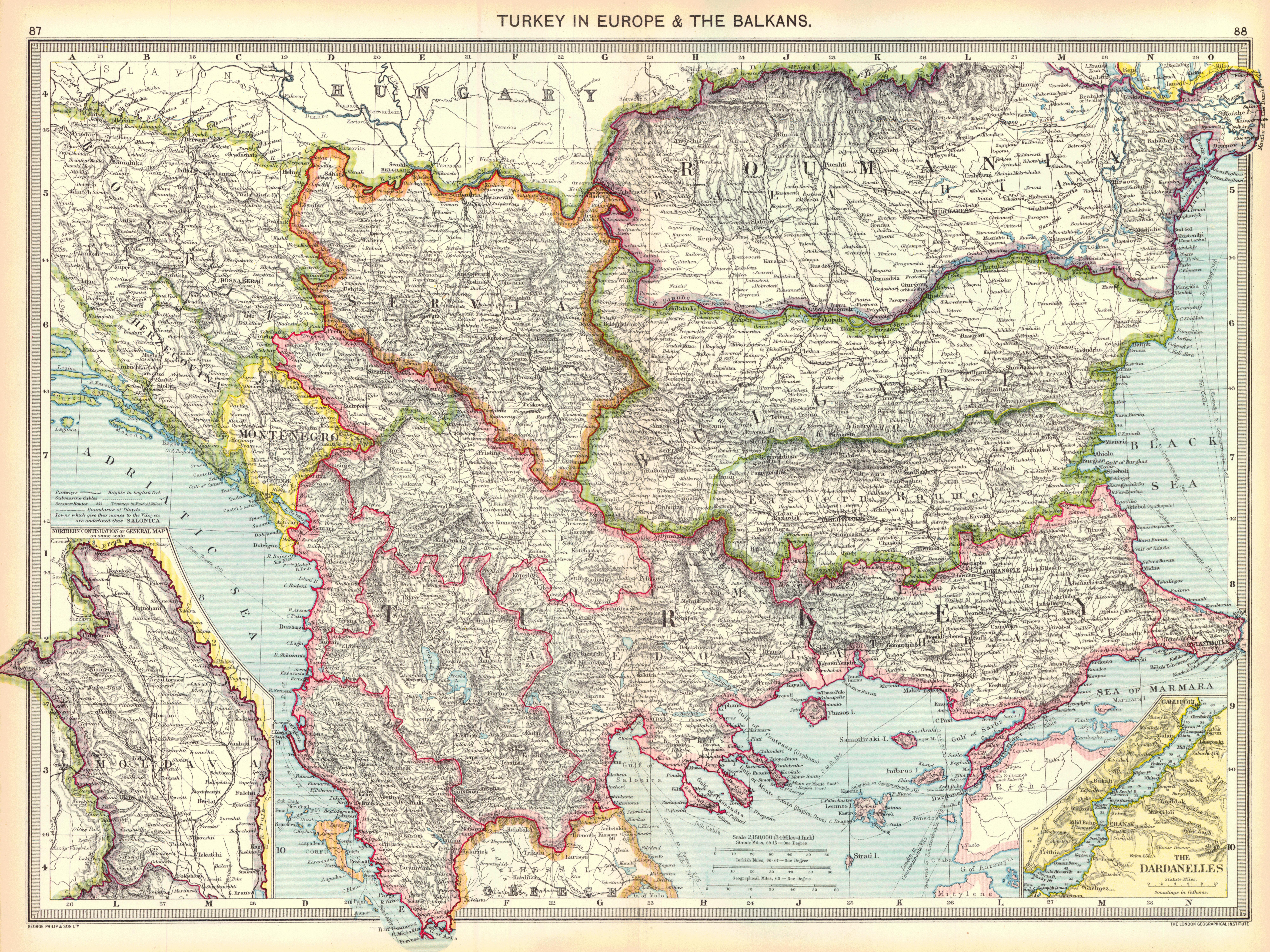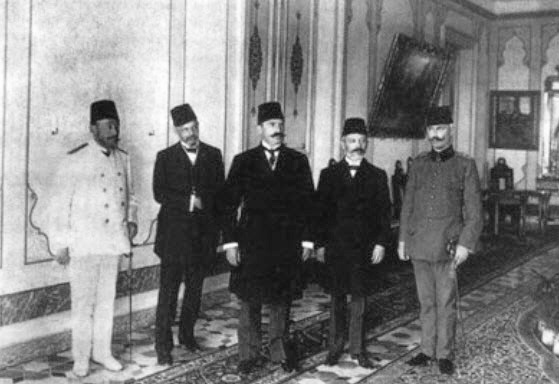|
31 March Incident
The 31 March Incident ( tr, 31 Mart Vakası, , , or ) was a political crisis within the Ottoman Empire in April 1909, during the Second Constitutional Era. Occurring soon after the 1908 Young Turk Revolution, in which the Committee of Union and Progress (CUP) had successfully restored the Constitution and ended the absolute rule of Sultan Abdul Hamid II, it is sometimes referred to as an attempted countercoup or counterrevolution. It consisted of a general uprising against the CUP within Istanbul, largely led by reactionary groups, particularly Islamists opposed to the secularising influence of the CUP and supporters of absolutism, although liberal opponents of the CUP within the Ottoman Liberty Party also played a lesser role. The crisis ended after eleven days, when troops loyal to the CUP restored order in Istanbul. The crisis began with a mutiny among elite Macedonian troops of the Istanbul garrison on the night of 12–13 April ( R.C. 30–31 March) 1909, sparked by agitatio ... [...More Info...] [...Related Items...] OR: [Wikipedia] [Google] [Baidu] |
Hüseyin Hilmi Pasha
Hüseyin Hilmi Pasha ( ota, حسین حلمی پاشا tr, Hüseyin Hilmi Paşa, also spelled Hussein Hilmi Pasha) (1 April 1855 – 1922) was an Ottoman statesman and imperial administrator. He was twice the Grand Vizier of the Ottoman Empire around the time of the Second Constitutional Era. He was also one-time president of the Turkish Red Crescent. Hüseyin Hilmi was one of the most successful Ottoman administrators in the explosive Balkans of the early 20th century, becoming the Ottoman Inspectorate-General of Macedonia from 1902 to 1908, Minister of the Interior from 1908 to 1909, and ambassador to Austria-Hungary from 1912 to 1918. He is often regarded, along with Ahmet Rıza Bey and Hasan Fehmi Pasha, as one of the leading statesmen who encouraged and propagated further progressivism. Biography Hüseyin Hilmi was born in 1855 in Midilli. He was of Greek ancestry, an ancestor had converted to Islam. He did his primary studies in Lesbos and learned fluent French a ... [...More Info...] [...Related Items...] OR: [Wikipedia] [Google] [Baidu] |
Mehmed V
Mehmed V Reşâd ( ota, محمد خامس, Meḥmed-i ḫâmis; tr, V. Mehmed or ; 2 November 1844 – 3 July 1918) reigned as the 35th and penultimate Ottoman Sultan (). He was the son of Sultan Abdulmejid I. He succeeded his half-brother Abdul Hamid II after the 31 March Incident. He was succeeded by his half-brother Mehmed VI. His nine-year reign was marked by the cession of the Empire's North African territories and the Dodecanese Islands, including Rhodes, in the Italo-Turkish War, the traumatic loss of almost all of the Empire's European territories west of Constantinople (now Istanbul) in the First Balkan War, and the entry of the Ottoman Empire into World War I in 1914, which would ultimately lead to the Empire's end. Early life Mehmed V was born on 2 November 1844 at the Çırağan Palace, Istanbul.''The Encyclopædia Britannica'', Vol.7, edited Hugh Chisholm, (1911), 3; "''Constantinople, the capital of the Turkish Empire..''". His father was Sultan Abdulmejid I ... [...More Info...] [...Related Items...] OR: [Wikipedia] [Google] [Baidu] |
General Assembly Of The Ottoman Empire
The General Assembly ( tr, Meclis-i Umumî (French romanization: "Medjliss Oumoumi" ) or ''Genel Parlamento''; french: Assemblée Générale) was the first attempt at representative democracy by the imperial government of the Ottoman Empire. Also known as the Ottoman Parliament (french: Parlement Ottoman'' Legislation ottomane'' Volume 5: https://upload.wikimedia.org/wikipedia/commons/6/67/L%C3%A9gislation_ottomane_ou_Recueil_des_Aristarchi-Bey_Gr%C3%A9goire_Tome5.pdf p. 295 (PDF p. 299/370)), it was located in Constantinople (Istanbul) and was composed of two houses: an upper house (Senate, ''Meclis-i Âyân''), and a lower house (Chamber of Deputies, ''Meclis-i Mebusân''). The General Assembly was first constituted on 23 December 1876 and initially lasted until 14 February 1878, when it was dissolved by Sultan Abdul Hamid II. As a result of the Young Turk Revolution which brought substantial reforms and larger participation by political parties, the General Assembly was re ... [...More Info...] [...Related Items...] OR: [Wikipedia] [Google] [Baidu] |
Action Army
The Action Army ( tr, Ḥareket Ordusu), also translated as the Army of Action, was a force formed by elements of the Ottoman Army sympathetic to the Committee of Union and Progress (CUP) during the 31 March Incident, sometimes referred to as the 1909 countercoup. Mobilised in Selanik (modern Thessaloniki) by Mahmud Shevket Pasha, it occupied Istanbul and successfully suppressed the uprising in the 31 March Incident. Background The 1908 Young Turk Revolution, led by the CUP, forced Sultan Abdul Hamid II to restore a system of constitutional monarchy, ushering in the Second Constitutional Era. The 1909 countercoup was instigated by a mutiny of dissatisfied troops in Istanbul, who were joined by reactionary religious protestors demanding a return to autocracy under Abdul Hamid and Sharia. With the resignation of Hüseyin Hilmi Pasha's cabinet the mutiny developed into a wider political crisis. Composition The Action Army was organised by Mahmud Shevket Pasha, commander of the T ... [...More Info...] [...Related Items...] OR: [Wikipedia] [Google] [Baidu] |
Ottoman Army (1861–1922)
, image = File:Osmanli-nisani.svg , dates = 1842/1861 – 1922 , country = , allegiance = Ottoman Sultan , branch = , type = Army , size = ~2,873,000 est. (1918) , command_structure = , garrison = Constantinople , garrison_label = , nickname = , patron = , motto = , colors = , colors_label = , march = , mascot = , equipment = , equipment_label = , battles = World War I ( Battle of Gallipoli), Arab Revolt, Tripolitanian War, Balkan Wars , anniversaries = , decorations = , battle_honours = , commander1 = Mehmed V (World War I) , commander1_label = Sultan , commander2 = , commander3 = Ismail Enver Pasha , commander3_label = Minister of War , notable_commanders = Mustafa Kemal Atatürk , notable_c ... [...More Info...] [...Related Items...] OR: [Wikipedia] [Google] [Baidu] |
Ottoman Greeks
Ottoman Greeks ( el, Ρωμιοί; tr, Osmanlı Rumları) were ethnic Greeks who lived in the Ottoman Empire (1299–1922), much of which is in modern Republic of Turkey, Turkey. Ottoman Greeks were Greek Orthodoxy, Greek Orthodox Christians who belonged to the Rum Millet (''Millet-i Rum''). They were concentrated in eastern Thrace (especially in and around Constantinople), and western, central, and northeastern Anatolia (especially in Smyrna, Cappadocia, and Erzurum vilayet, respectively). There were also sizeable Greek communities elsewhere in the Ottoman Balkans, Ottoman Armenia, and the Ottoman Caucasus, including in what, between 1878 and 1917, made up the Russian Caucasus province of Kars Oblast, in which Pontic Greeks, northeastern Anatolian Greeks, and Caucasus Greeks who had collaborated with the Russian Imperial Army in the Russo-Turkish War of 1828–1829 were settled in over 70 villages, as part of official Russian policy to re-populate with Orthodox Christians an area ... [...More Info...] [...Related Items...] OR: [Wikipedia] [Google] [Baidu] |
Armenians In The Ottoman Empire
Armenians in the Ottoman Empire (or Ottoman Armenians) mostly belonged to either the Armenian Apostolic Church or the Armenian Catholic Church. They were part of the Armenian millet until the Tanzimat, Tanzimat reforms in the nineteenth century equalized all Ottoman citizens before the law. Armenians were a significant minority in the Empire. They played a crucial role in Ottoman industry and commerce, and Armenian communities existed in almost every major city of the empire. Despite their importance, Armenians were heavily persecuted by the Ottoman authorities especially from the latter half of the 19th century, culminating in the Armenian Genocide. Background The Ottomans introduced a number of unique approaches to governing into the traditions of Muslim world, Islam. Islamic culture did not separate religious and secular matters. At first, the Sultan was the highest power in the land and had control over almost everything. However, a state organization began to take a mo ... [...More Info...] [...Related Items...] OR: [Wikipedia] [Google] [Baidu] |
Pogroms
A pogrom () is a violent riot incited with the aim of massacring or expelling an ethnic or religious group, particularly Jews. The term entered the English language from Russian to describe 19th- and 20th-century attacks on Jews in the Russian Empire (mostly within the Pale of Settlement). Similar attacks against Jews which also occurred at other times and places retrospectively became known as pogroms. Sometimes the word is used to describe publicly sanctioned purgative attacks against non-Jewish groups. The characteristics of a pogrom vary widely, depending on the specific incident, at times leading to, or culminating in, massacres. Significant pogroms in the Russian Empire included the Odessa pogroms, Warsaw pogrom (1881), Kishinev pogrom (1903), Kiev pogrom (1905), and Białystok pogrom (1906). After the collapse of the Russian Empire in 1917, several pogroms occurred amidst the power struggles in Eastern Europe, including the Lwów pogrom (1918) and Kiev Pogroms (1919). ... [...More Info...] [...Related Items...] OR: [Wikipedia] [Google] [Baidu] |
Yeşilköy
(; meaning "Green Village"; prior to 1926, San Stefano or Santo Stefano el, Άγιος Στέφανος, Ágios Stéfanos, tr, Ayastefanos) is an affluent neighbourhood ( tr, mahalle) in the district of Bakırköy, Istanbul, Turkey, on the Marmara Sea about west of Istanbul's historic city centre. Prior to the rapid increase of Istanbul's population in the 1970s, Yeşilköy was a secluded village and sea resort. Etymology The original name, ''San Stefano'', in use until 1926, derives from a legend: in the early 13th century, the ship carrying Saint Stephen's relics to Rome from Constantinople, sacked by the crusaders of the Fourth Crusade, was forced to stop here because of a storm. The relics were taken to a church until the sea calmed, and this gave the name to the church and to the place.Tuna(2004) In 1926, the village was named Yeşilköy which means "Green Village" in Turkish. It is believed that the writer Halit Ziya Uşakligil who lived there at the time gave this ne ... [...More Info...] [...Related Items...] OR: [Wikipedia] [Google] [Baidu] |







